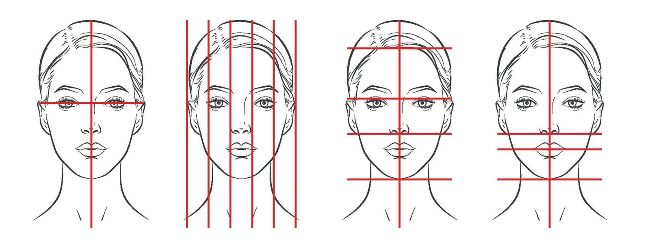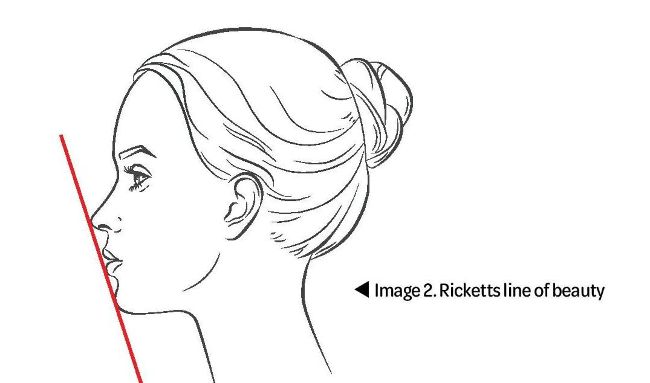feature
Getting lippy
Nurse practitioner Michelle Worthington looks at whether the perfect lip ratio exists
Within aesthetics, lips are of great importance in determining facial beauty. Lip augmentation, using hyaluronic acid, is, without doubt, one of the most popular non-surgical cosmetic procedures performed, which led me to consider why this is so, and whether there was a perfect ratio that we could all follow.
Lips are beautiful and deemed sexually attractive. The definition of beauty has been a debated subject since ancient times, with Phidias (500BC-432BC) creating the ‘Golden Ratio’ (which is also named Phi) – a ratio of 1:1:68 – which in terms of lips is essentially the ideal vertical upper to lower lip height, with side-to-side symmetry following the same ratio.1 Da Vinci picked up on this mathematical beauty, incorporating it into his Renaissance art such as the Mona Lisa and Vitruvian Man.2 These pieces of art are seen as aesthetically pleasing as the golden ratios provide balanced, equal vertical halves. But given that this ratio was devised thousands of years ago, what research has been done more recently to determine if this balance is, still, in fact important?
Most research on this subject has been performed, predominantly on white Caucasian women. Within our more modern, multicultural society, where cultural beauty is heightened and variable lip ratios are requested, is there such a thing as the perfect lip ratio, as per Phidias’ ‘Golden Ratio’ or is there something more? Could this original ratio still serve us in our modern-day consultations? What are today’s perfect facial proportions? Is the Phi calculation timeless? Or is beauty literally in the eye of the often non-Caucasian beholder?
I decided to do my own research to see what I could find.
RACE VS THE RATIO
The dimensions of the lips are very variable between races according to Kibadi who explains, “in certain individuals of the Caucasian white race, lips are so fine and so thin that one hardly notices a small red border of the external mucous membrane. The black African, on the contrary, has voluminous and elongated lips, turned upwards towards the nose and downwards towards the chin, and which in profile, protrude considerably in front of the face”.3 Ding also discusses how people of Afro-Caribbean origin tend to have the greatest lip volume compared to any other ethnic group. It is believed this is due to the protective effect of increased melanin in their skin. They are also less likely to develop fine lines around their vermillion border in contrast to Caucasian lips with less melanin, which are more prone to the effects of peri-oral ageing.4
Interestingly a study performed by Wong in 2010 looked at how lips contribute to facial beauty whilst considering ethnic differences.5 The sets of lips were isolated from their corresponding faces and the result, interestingly, was that the lips did not contribute as much to facial attractiveness as previously thought. Chinese and Korean subjects exhibited significantly different lip parameters and lip projection volumes from those of Caucasians. Near identical results were found in a later study, in which Chinese women had the thickest lower lip and the greatest upper lip volume, whilst Korean women had the highest ratio of upper to lower lip. In comparison, Caucasian lips were found to be the thinnest with the smallest upper lip height and volume.
It is important to note that ethnic differences play a role in facial dimensions and the evaluation of beauty. Chinese and Korean women at 1:1.25 and Caucasian 1:1.68 give natural-looking results and leave patients pleased with results matching this ratio, with the African face having an upper to lower lip vermillion ratio of 1:1.
HOW TO MANAGE CONSULTATIONS ON LIPS
So now we’ve established that looking at lips in isolation, and taking consideration of race and ethnic differences can create a different ratio requirement, how do we manage consultations before treatment?
It is important to note that canons, proportions, and Phi 1:1.618 provide a general reference for facial analysis during most aesthetic consultations. The face can be divided into equal vertical halves, equal vertical fifths, or horizontal facial thirds (see image 1).6 When discussing lip augmentation, it is helpful to subdivide the lower third of the face into thirds as this allows for discussion of clinical findings. All faces are unique; subdividing the lower face into the upper lip, lower lip, and chin, enables discussion of size, shape, volume, and realistic expectations, which need to appeal not only to the patient’s visual needs but also to emotional needs.

Image 1. Division of the face into facial halves, vertical fifths, horizontal thirds, and lower facial subdivided thirds
The Ricketts line is also identified as a line of beauty (Image 2 below). If the patient is non-Caucasian, it is important to discuss native ratios or whether they are aiming for a Westernised appearance.7 We cannot assume that skin colour dictates personal aesthetic goals - active listening in consultations is key!

Image 2. Ricketts line of beauty
LIP RATIO AND AGE
Then, to complicate matters further, our clients get older. As we all know, with age, lips become less attractive, lose volume, and become thinner, flatter and often asymmetric with the formation of oral commissures. With facial ageing, lips don’t always require an increase in size to restore harmony. We should be making considerations that involve contour, shape, projection, volume, support, asymmetries, patient smile and facial ageing, not always an increase in size. These are based on anatomy, harmony and personal goals.
THE DENTAL IMPACT
We also need to look at lip ratios in conjunction with the teeth. If the height to width of the centre front two teeth don’t conform to the ratio of 1:1.618 which is the golden ratio in dentistry, then the patients’ ideal lip ratio may not be possible when they smile. This means your hard work and product will be wasted the moment the camera goes ‘click’.
CAN WE BE MORE NATURAL AND FORGET THE RATIOS?
Understandably, as the aesthetic industry grows along with the popularity of lip fillers, industry influencers are naming their techniques which currently focus on natural results. Dr Steven Harris is hoping to de-alienise lips by promoting his “NLL” (non-surgical lip lift), which focuses on the presentation of an individual’s tubercles, via a technique named Lip Classification of Tubercles (Harris et al 2023).8
SO, DOES THE PERFECT LIP RATIO EXIST?
Despite what would seem a ‘perfect’ mathematical ratio existing, when applied to the natural face, it simply doesn’t always work. When you factor in age, ethnicity, dental structure, race, gender, trends and what the client wants, you cannot have a ‘one size, fits all’ approach. Younger patients in particular can sometimes ask for unnatural results; as responsible practitioners, we should try to keep results natural and not overfill.
It is a highly subjective point (as demonstrated by looking at lips in isolation) and so I’m not surprised that new ratios are being introduced as guidelines for us to use in our multicultural society.
Our popular desired “off-the-shelf ” look will change, as do fashions over time. As long as personal, preferred lip ratios amplify self-esteem and therefore, promote inner confidence, then that is what matters.
REFERENCES
1. http://geom.uiuc.edu/~demo5337/s97b/art.htm#:~:text=Throughout%20 history%2C%20the%20ratio%20for,for%20the%20Greek%20sculptor%20 Phidias.
2. https://monalisa.org/2012/09/12/leonardo-and-mathematics-in-his-paintings/
3. https://scirp.org/journal/paperinformation?paperid=125470
4. Ding A. The ideal lips: lessons learnt from the literature. Aesthetic Plast Surg. 2021;45(4):1520–1530. doi: 10.1007/s00266-021-02190-x
5. Wong WW, Motakef S, Lin Y, Gupta SC. Redefining the ideal buttocks: a population analysis. Plast Reconstr Surg. 2016;137(6):1739–1747. doi: 10.1097/ PRS.0000000000002192
6. Schmid, K., Marx, D. & Samal, A. Computation of a face attractiveness index based on neoclassical canons, symmetry, and golden ratios. Pattern Recognition 41, 2710–2717, https://doi.org/10.1016/j.patcog.2007.11.022 (2008).
7. https://theveramedicalinstitute.com/the-esthetic-plane/
8. https://ncbi.nlm.nih.gov/pmc/articles/PMC10016322/